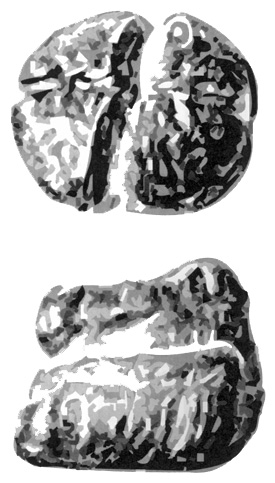 When I asked my Zen teacher, Shunryu Suzuki Roshi, if he had any advice for working in the kitchen, he said, “When you wash the rice, wash the rice. When you cut the carrots, cut the carrots. When you stir the soup, stir the soup.” Taking his words to heart, I found that they had the power to evoke what lies hidden in the depths of being. Something awakens. It is not self, not other, not me, not the world. To “be mindful while you work” carries a certain dryness, not to mention distraction: doing something—practicing mindfulness besides what you are doing. What Suzuki Roshi meant was more like “throw yourself into it” or “immerse yourself in what you are doing.”
When I asked my Zen teacher, Shunryu Suzuki Roshi, if he had any advice for working in the kitchen, he said, “When you wash the rice, wash the rice. When you cut the carrots, cut the carrots. When you stir the soup, stir the soup.” Taking his words to heart, I found that they had the power to evoke what lies hidden in the depths of being. Something awakens. It is not self, not other, not me, not the world. To “be mindful while you work” carries a certain dryness, not to mention distraction: doing something—practicing mindfulness besides what you are doing. What Suzuki Roshi meant was more like “throw yourself into it” or “immerse yourself in what you are doing.”
Making and baking bread was an especially good place for me to actualize the teaching. Standing, stirring in yeast, mixing in flour, kneading dough, a body gives life to life: “ingredients” become “bread.” And bringing those ingredients together gives life to arms and hands, to legs and feet. Immersed in the activity, the doing does you. And a body rejoices, feels vibrant, gets “spent.” What a blessing.
Start with an empty bowl. Ceramic embodies a certain romance: the support of earth, the upholding of stone, and once warmed, the conveyance of heat, the “womb” of life in which the dough will swell. In the absence of a ceramic bowl, stainless steel can hold and contain. Before adding the warm water, check the temperature: tepid on the hands, which are accustomed to feeling heat and cold, just warm on the inner wrist. And in goes yeast, sweetener, sometimes powdered milk, and enough flour to form a thick batter. Thumb and fingers firmly gripping the spoon, vigorous motion of the arm as the spoon dips in and out of the batter, which becomes more elastic. A rising.
And it’s time for oil, salt, and folding in flour. Time for kneading. Rocking forward, rocking back, it is oceanic, harmonic, flowing. Touching and being touched. The dough is warm, soft, yielding yet firm. Push and it pushes back. You study how to move with the dough, turn, fold, push, how to flow, how to move at the pace at which the dough most delightfully moves. How it yields and stretches, how it expands. Push too vigorously, and the dough tears. It is not happy. Push too softly, and the dough is unresponsive. To bring the dough to fulfillment, you feel, respond. Hands come alive as they notice warmth, pulsation, softness, fluidity, as they notice life. The rocking of the hips is a hum, a chant, a drone, a prayer.
All that was stuck, fixated, frozen in place, now moves, and in moving, delights. It is Zen Master Dogen’s “dharma gate of enjoyment.” The body is no longer structured from memory, from unconscious rules of behavior, but resonates with song, the song of bread-making-itself.
Elbows flex and straighten, a breeze in the summer air; shoulders awaken, water flowing over the rocks, and the chest expands, releases, leaps. Wings spread. Have you attained something, or have you let go the idea there is anything to be attained? Have you gotten somewhere, or resumed your original nature, boundless and immeasurable?
Time stops, time swings, without separation from object, without separation from experience. The body is completely willing. The body does not begrudge the time it takes, does not aim for the future, is not enmeshed in the past. That’s what the mind does. The too-solid flesh melts, responding to the dough, engaging the hands in absorption. Wrists, forearm, elbows, a body standing. Somewhere a floor. Kneading the bread covers all space; there is nothing outside this vastness, and time is simply swallowed up.
Feeling what your hands are feeling, standing where your feet are standing, breathing the air your lungs are breathing. Shaping a ball, scoring it in half with a knife, and the dough spreads apart, lively, yielding, again delighting. Inside, the body springs.
A machine will not give your hands the massage the bread dough gives you, nor the messages. The body we believe is structured, but in the reality of bread-making-itself, a body is not to be found. No fingertips; but warmth, vibrancy. No palms; but softness, pliancy. Or is it that the bread becomes body? The palms of dough pressed to the palms of hands. It is the eye in the hand of Avalokiteshvara that sees: “This is holy. This is precious.” Body meeting body, body disappears, bread is realized.
And the fragrance from the oven conveys the sustenance of the ages . . . or is it the nourishment of the ageless? Smell that smell! We are blessed with these fruits of the earth. We are heartened by the matter we call work, as well as by the spirit we call bread. ▼
Thank you for subscribing to Tricycle! As a nonprofit, we depend on readers like you to keep Buddhist teachings and practices widely available.